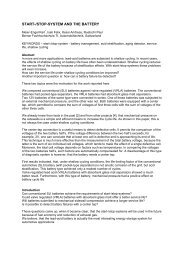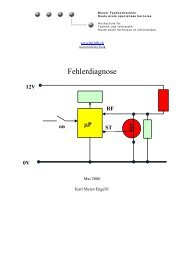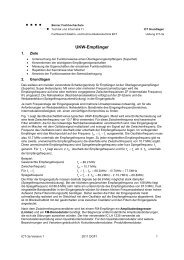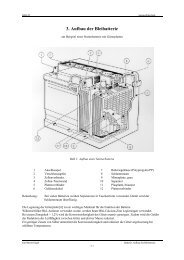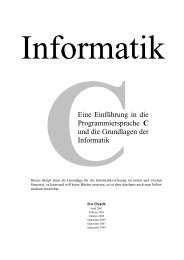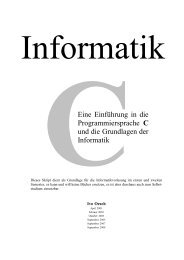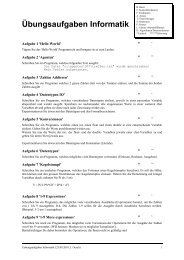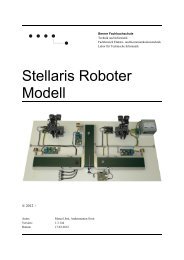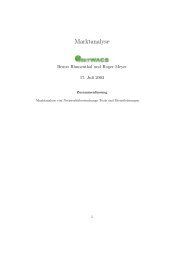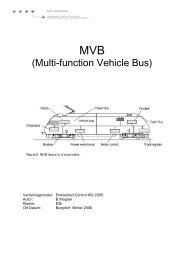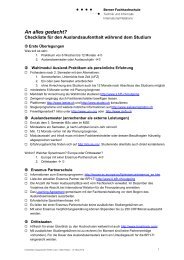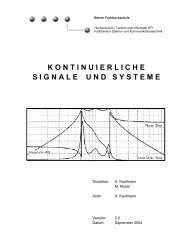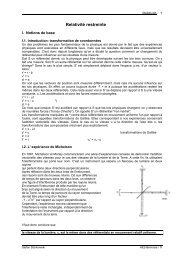Verdoppelung der Arbeitszahl von Wärmepumpen und ...
Verdoppelung der Arbeitszahl von Wärmepumpen und ...
Verdoppelung der Arbeitszahl von Wärmepumpen und ...
Sie wollen auch ein ePaper? Erhöhen Sie die Reichweite Ihrer Titel.
YUMPU macht aus Druck-PDFs automatisch weboptimierte ePaper, die Google liebt.
2<br />
<strong>Verdoppelung</strong> <strong>der</strong> <strong>Arbeitszahl</strong> <strong>von</strong> <strong>Wärmepumpen</strong> <strong>und</strong> Kältemaschinen mit kleinem Temperaturhub<br />
Author <strong>und</strong> Coauthors Dr. Beat Kegel, Dr. Beat Wellig, Heinz Richter<br />
Institute or Company Ernst Basler + Partner AG<br />
Address Mühlebachstrasse 11, 8032 Zürich<br />
Telephon, E-mail, Internet-address +41 (0)1 395 16 16<br />
beat.kegel@ebp.ch<br />
www.ebp.ch<br />
Duration of the project 1. Mai 2004 – 1. Nov. 2005<br />
ABSTRACT<br />
DOUBLING OF THE COEFFICIENT OF PERFORMANCE OF HEATPUMPS AND REFRIGERATION<br />
SYSTEMS WITH SMALL TEMPERATURE GRADIENT<br />
The coefficient of performance (COP) of heat pumps and refrigeration systems is closely related to the temperature<br />
difference between the heat source and heat sink. In many applications in building services engineering,<br />
a temperature lift of 10–20 K is sufficient in principle. However, the potential for systems with very<br />
high COP is not fully exploited as standard plants are designed for lifts of 30–60 K. Basic decisions, which<br />
ultimately lead to such a less than ideal design, are taken at an early stage of a project. The main objective<br />
is to give guidelines and rules for the design of systems with small temperature lifts. In a fist step, a refrigeration<br />
system in an office building was analyzed. In this system, the COP increases with decreasing temperature<br />
lift from approximately 4.0 at 25 K up to values aro<strong>und</strong> 5.5 at 10 K. If the auxiliary energy consumption<br />
of the fan and pumps is taken into account, the COP is aro<strong>und</strong> 3.5 and independent of the temperature<br />
lift. The following measures have to be taken in or<strong>der</strong> to significantly improve the efficiency: (1) The temperature<br />
lift should be kept as small as possible, i.e. neither the evaporation nor the condensation temperature<br />
should be controlled to a constant value. The evaporation temperature should be controlled depending<br />
on the enthalpy of the ambient air. (2) The chiller should primarily run during the night and morning when<br />
the temperature lift is small (at the utmost dehumidification in the afternoon). The stored cooling energy in<br />
the building material can be utilized to offset heat gains during the day. (3) The hydraulic system has to be<br />
very carefully designed. Implementing these simple measures will consi<strong>der</strong>ably reduce energy consumption<br />
and on-going operating costs.



